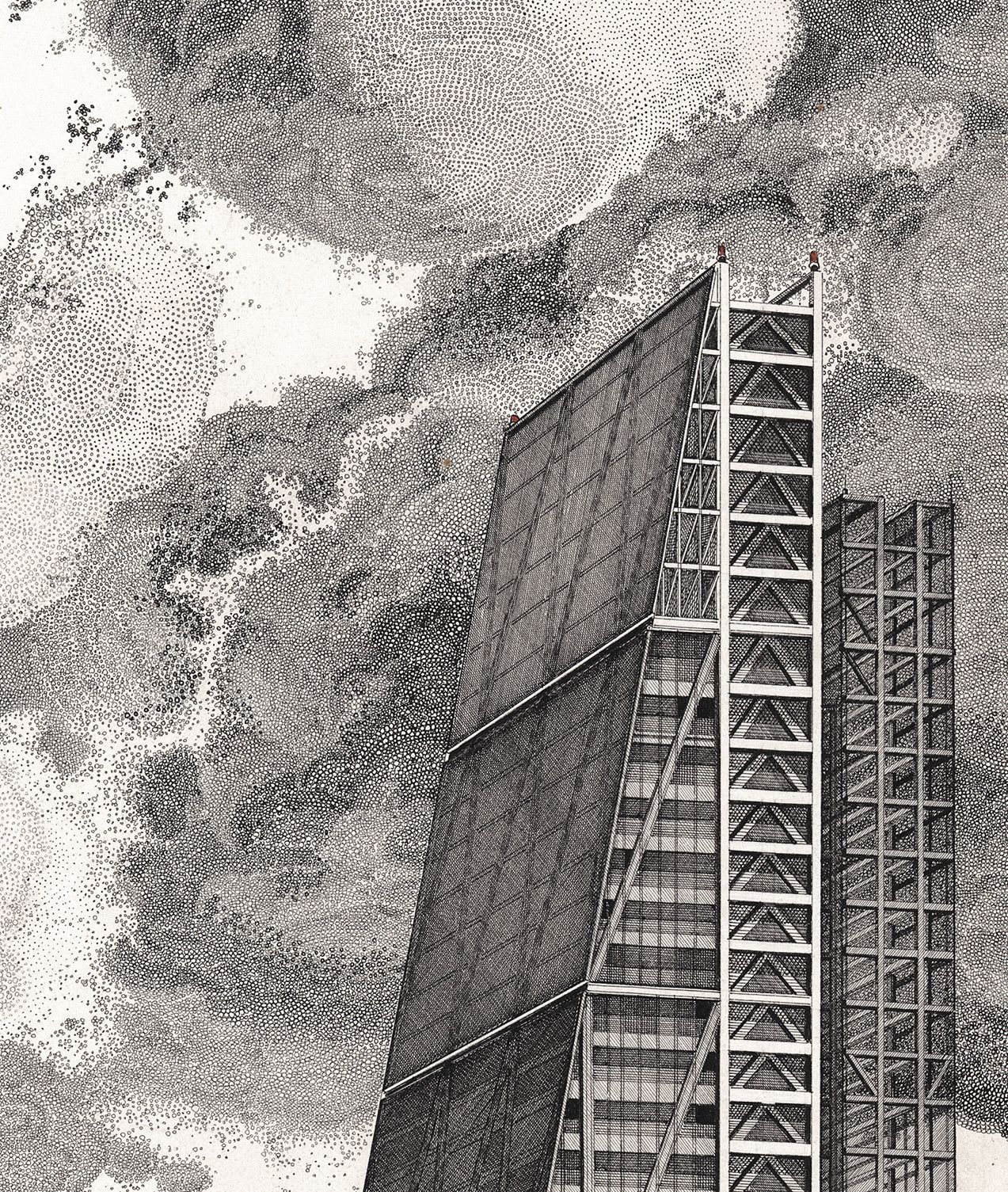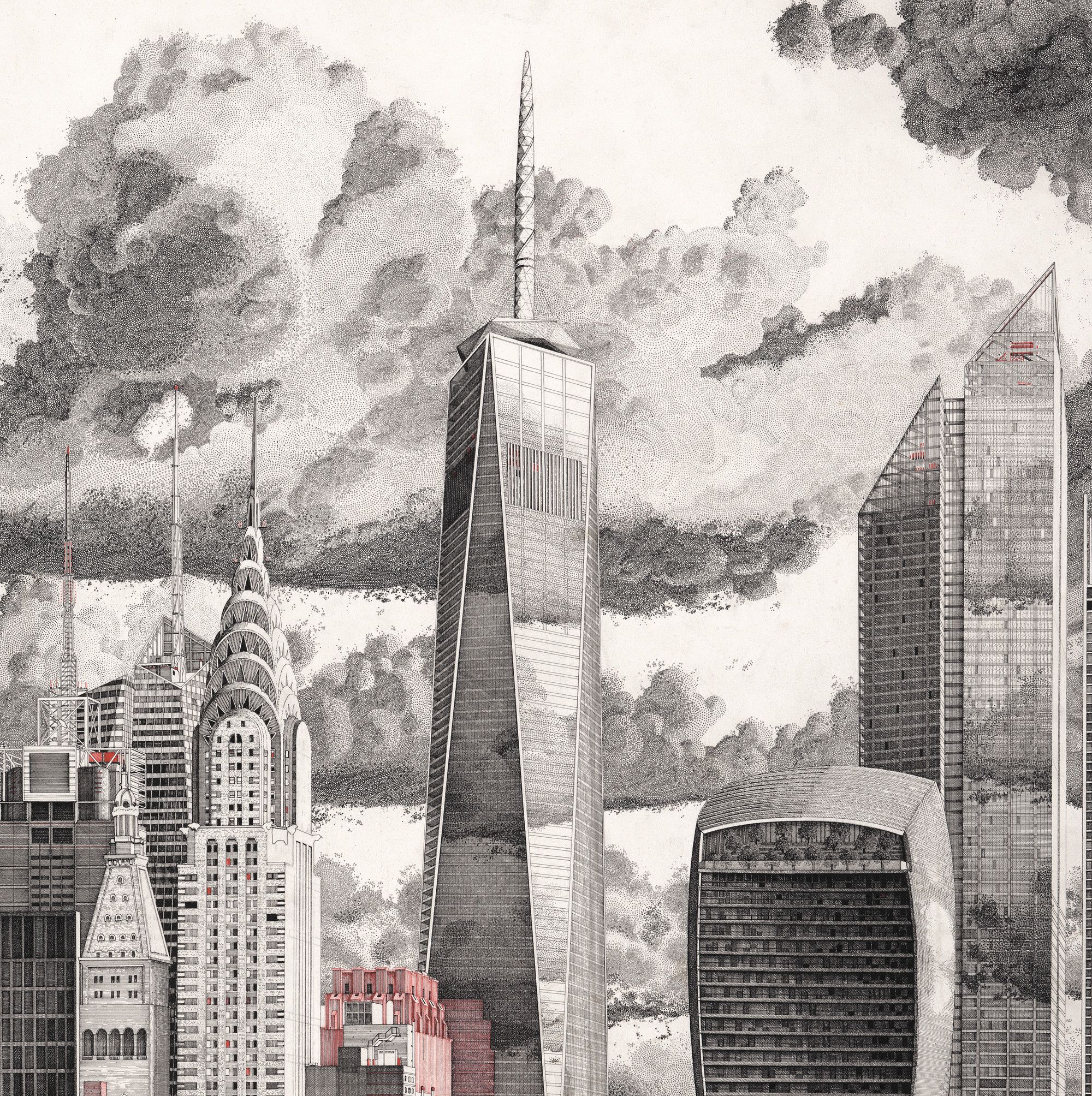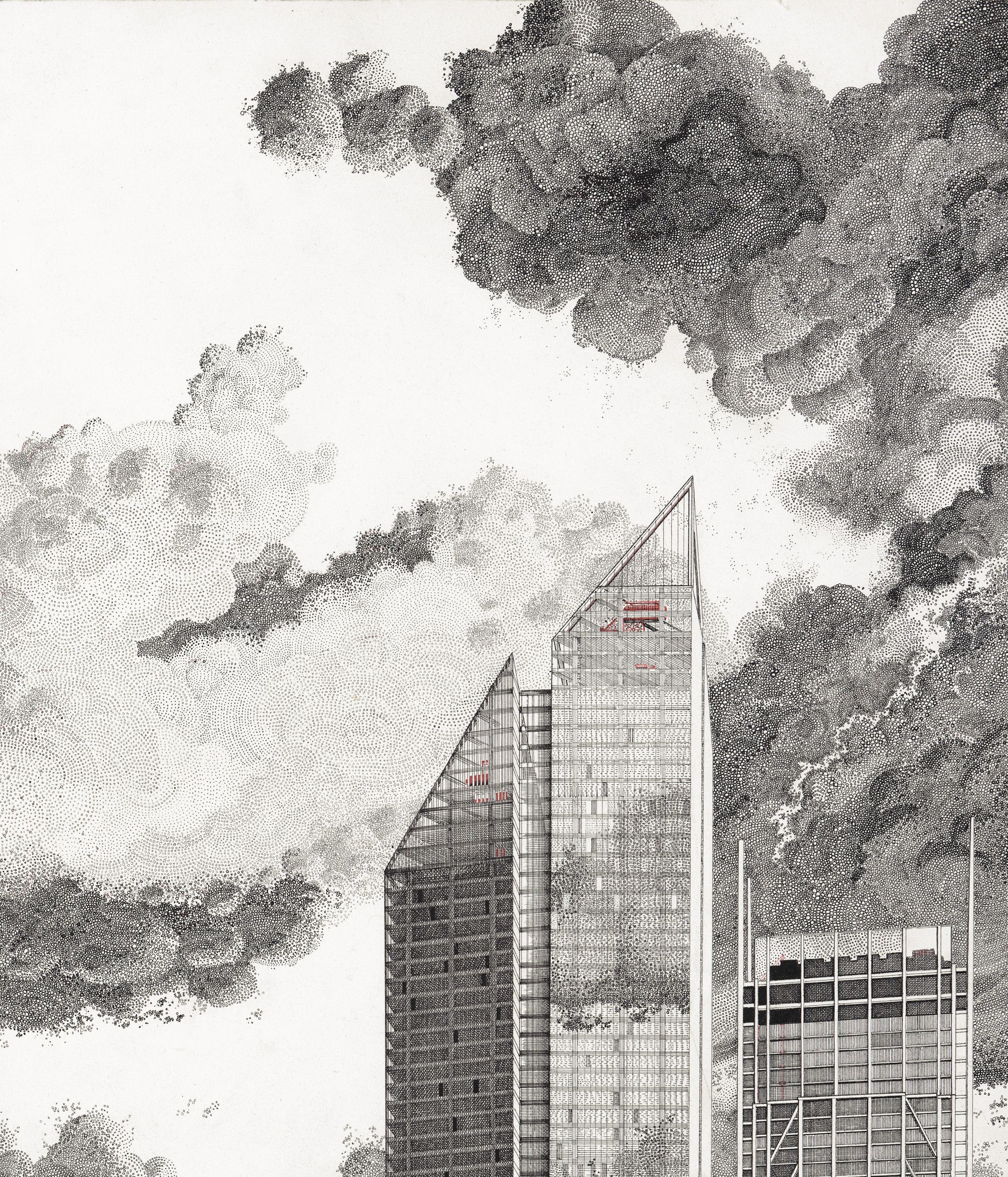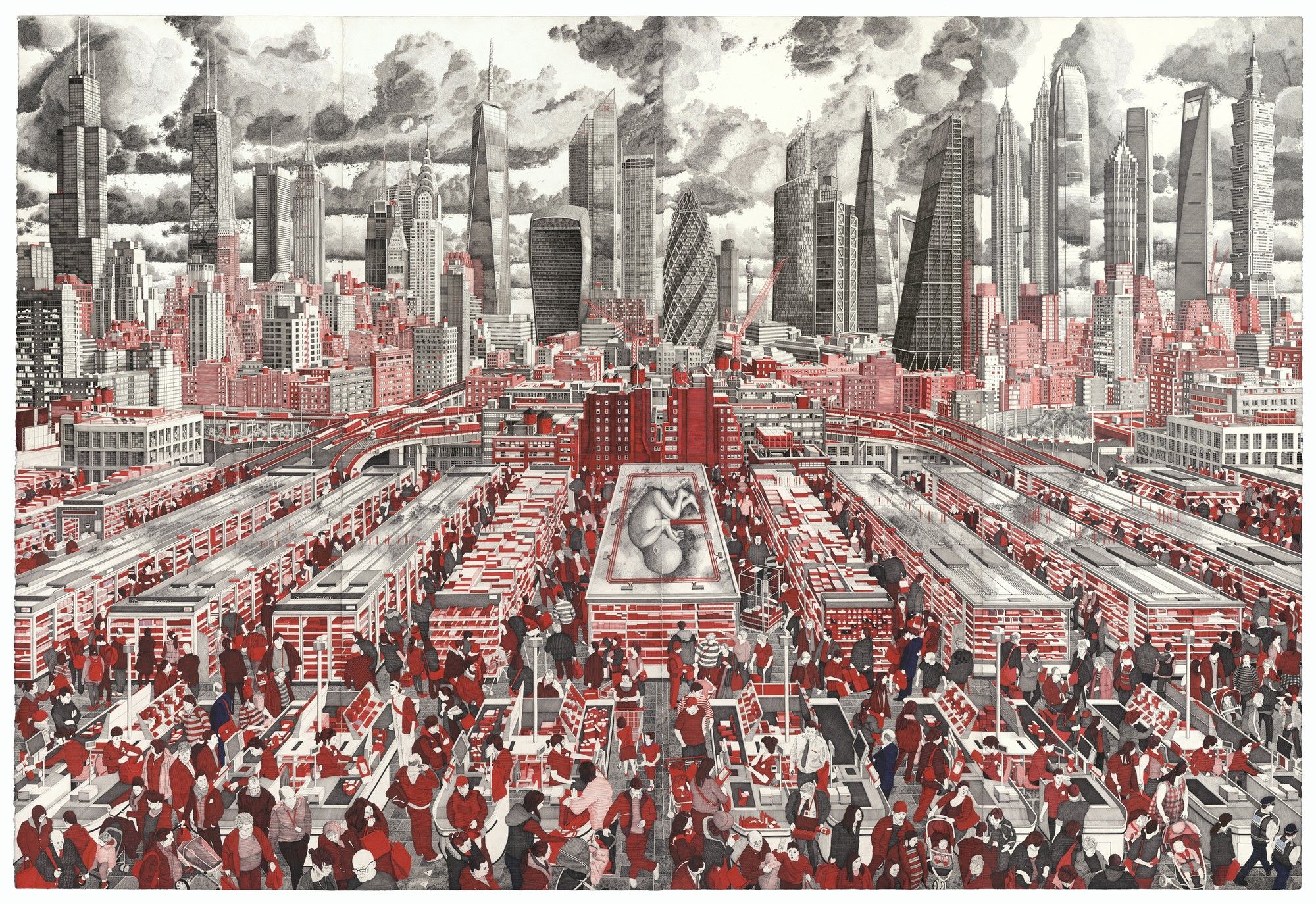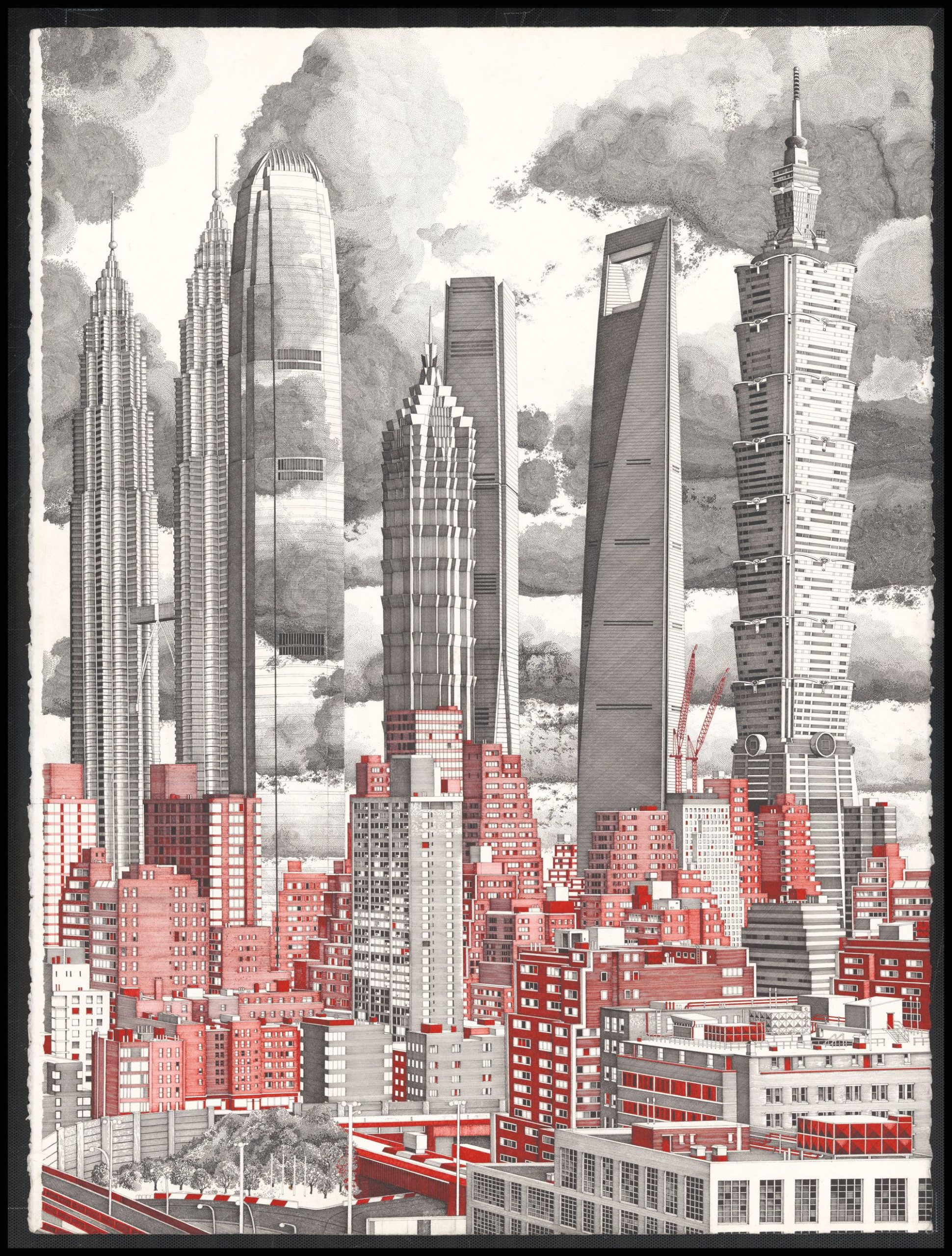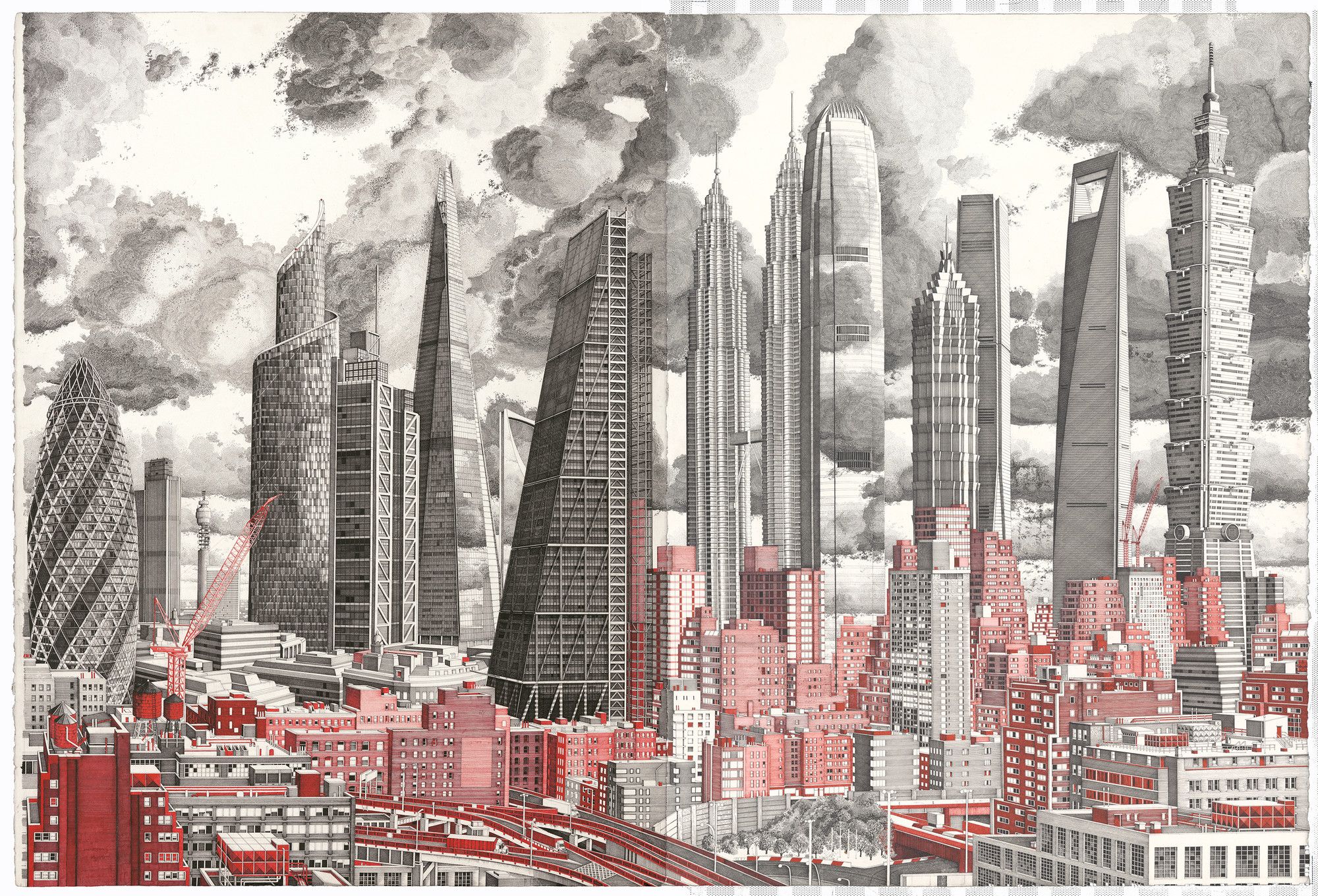The Happiness Machine
More than 10.000 working hours spread over 3 years have led to the emergence of The Happiness Machine, a gigantic painting by London based self-taught artist Mark Lascelles Thornton. Completed between 2011 and 2014, the painting that has 2,4 x 1,5 m is made from 8 vertical pieces, joined together.
The idea behind this project was wandering around Lascelles Thornton’s head for a while, until he had a moment of revelation while shopping in a mall. He saw the isles from above, and felt like “looking down on a city from the top of the Empire state building”. That was the precise moment when the picture was formed in his mind.
An allusion to modern consumerism and roboticized lives we currently live, The Happiness Machine illustrates a bird eye view of a city, in which every building is actually a supermarket aisle with products, and people are strolling around with no purpose other than that. In the background we can observe some of the well known skyscrapers in the world, with the London ones in the middle. Lascelles Thornton says this “has something to do with Greenwich mean time”. The central building has a human fetus inside it, which makes it look like a human incubator. Should we interpret this as a hint at the “lack of time” people are complaining about, or is it a solution to the problem?
While the entire piece is a critique of the modern way of living, the monumentalism, the strive to achieve immortality through “having” and “buying” things, the author itself is not being excused. In an interview he declared he “had this enormous yearning to produce something with real scale. You can quite easily walk straight past a small drawing.”
The Happiness Machine was drawn with Rotring on white paper, in two color, with grayscales. The red and black colors have symbolic meaning, as they are depicting two opposite sides of any human interaction or environment. “You either inhabit one colour or the other. Most of the world is living in the red, and that’s just a statement of fact.”
It’s not only a magnificent proof of patience and perseverance, but also a good excuse to sit and contemplate about life and the world around you. It faces us with the question: how would the world you want to live in look like? Hostile and cold, or kind and loving?
By Cristina Juc
Courtesy of Mark Lascelles Thornton
Courtesy of Mark Lascelles Thornton
Courtesy of Mark Lascelles Thornton
Courtesy of Mark Lascelles Thornton
Courtesy of Mark Lascelles Thornton


